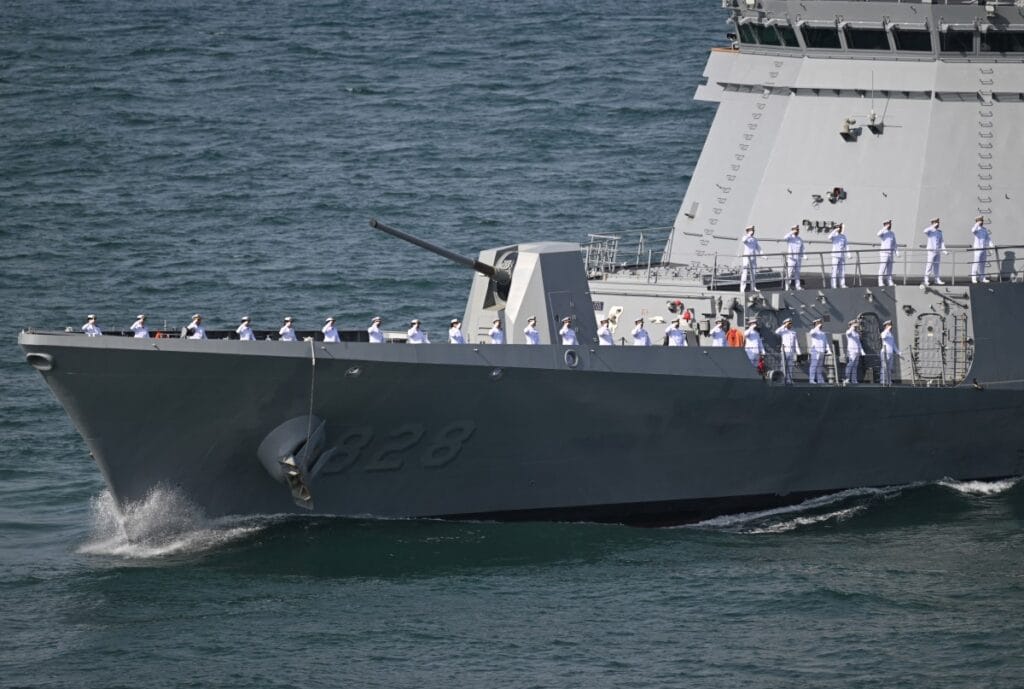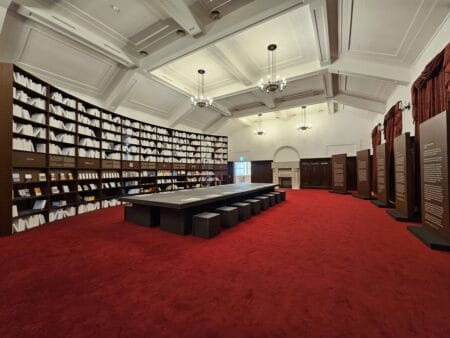October 14, 2025
SEOUL – South Korea’s Defense Ministry said Monday that it is moving to widen its maritime industrial partnership with the US from routine maintenance contracts to the construction of naval combatants, as the two allies seek to modernize their security ties.
According to the ministry’s plan submitted to lawmakers ahead of a parliamentary audit, Seoul’s defense authorities are seeking to “first secure a stable volume of MRO work,” or maintenance, repair and overhaul, and to open talks on building US Navy auxiliary and support vessels in Korean shipyards. Should that track prove durable, officials said, the cooperation would “expand to include combat ships,” a leap that would place Korean shipbuilders more squarely inside the US naval production ecosystem.
The initiative is in line with broader alliance conversations between Seoul and Washington about updating the 70-year security partnership for a more contested era as well as widening cooperation in shipbuilding, critical minerals, energy and other critical and emerging technologies. It also arrives as the Donald Trump administration presses to rebuild the US’ shipbuilding base, pushing allies and domestic yards alike to accelerate deliveries in the face of mounting global demand.
In a bid to restore public trust following its association with former President Yoon Suk Yeol’s failed martial law bid, the ministry also mentioned in its plan that it aims to complete by next year a far-reaching overhaul of the Defense Counterintelligence Command. The agency has been accused of wielding “excessive” powers spanning intelligence collection and criminal investigation. The plan would narrow the command’s remit to counterintelligence and redistribute other functions, with detailed steps to be drawn up by a special advisory committee of government, military and civilian experts operating through year-end.
Defense Minister Ahn Gyu-back, opening the parliamentary audit session at the National Assembly early Monday, vowed to build a military “that neither dominates the public nor bends to outside interference,” and to field a force equipped with advanced technologies amid North Korea’s expanding nuclear and missile arsenals.
On speculation that Washington could recalibrate US Forces Korea’s role as it places greater emphasis on countering an increasingly assertive China, Seoul’s defense chief said that the USFK’s current modernization drive is chiefly intended to sharpen deterrence against North Korea on the peninsula.
When asked about the US push to “modernize the alliance,” Ahn said the buildup’s purpose “lies in deterring North Korea.”
Ahn also distanced himself from US Army Secretary Daniel Driscoll’s recent characterization of both North Korea and China as “basic threats” to regional security, saying, “I cannot agree with such remarks.” While he said he understands Washington’s call for collective action across the Indo-Pacific, Ahn stressed that for Seoul the priority remains addressing the North Korean threat on the Korean Peninsula.
Even so, he acknowledged that the advanced weapons China displayed at a military parade in Beijing last month represent “complex” risks for both the peninsula and the broader region, and said South Korea is preparing accordingly.
The plan released Monday underscored South Korea’s plans to strengthen its multidomain defense posture with the US, prioritizing rapid detection of North Korea’s strategic and tactical provocations and immediate, calibrated responses that put civilian safety first.
Under a reinforced combined-defense framework, Seoul and Washington will intensify joint surveillance and readiness against incidents along land, sea and air approaches, as well as against missile launches and potential nuclear tests, while continuing efforts to prevent accidental clashes around the Demilitarized Zone and the Northern Limit Line.







